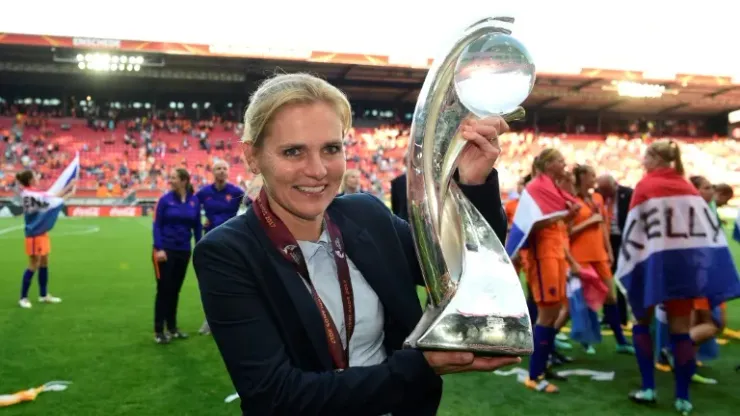Enschede (Netherlands) (AFP) – The six-goal final of the women’s football Euro in the Netherlands put a fine topping on a tournament proving the sport is growing across the continent, with record attendance and TV rating figures.
A growth in the number of teams to 16 from a previous 12 raised overall attendance to more than 240,000 people at the 31 games, up from 217,000 four years ago — with all Dutch games sold out, UEFA said.
“We did wonder how big the tournament would be. We knew it would depend on how we performed, but we could hardly have dreamed it would be this big,” said Dutch coach Sarina Wiegman.
The final drew a crowd of 28,000, which is much less than in 2013, but fans who paid exorbitant prices for tickets on the Internet attributed this to the limited capacity of the Enschede arena.
“In Amsterdam or Rotterdam it would be better, also for the women, if they could play at a bigger stadium,” Dutch fan Thea Mussche told AFP before the final in which the hosts beat Denmark 4-2.
She and her husband got their tickets for 80 euros each, against the highest official price of 60 euros but prices on the Internet climbed well over 100 euros on the day of the match.
Television ratings grew as well, and “record women’s Euro audiences have been achieved in many markets, including the Netherlands, Denmark and the United Kingdom,” UEFA said in a press release before the final.
Euro newcomers Austria, who made it to the semi-finals alongside England, sparked a women’s football fever in their country, with millions watching the games and a thousand fans showing up for a triumphant welcome in front of Vienna’s city hall.
“It is incredible that women’s football has finally found a place in the society,” beamed Austrian captain Victoria Schnaderbeck.
“We are incredibly proud because it hasn’t always been like this.”
Dutch striker Vivianne Miedema said she had noticed increased interest from the public.
“We’ve seen already in this tournament if we had a day off and we went on the street that a lot of girls and a lot of other people recognised us,” said Dutch striker Vivianne Miedema.
“The tournament has been really big, with all the little fans, it’s just amazing that they wear the little t-shirts with Miedema and Martens on their back.”
– Growing quality –
Wearing an orange hat and holding a Dutch flag, fan Maria Kentin said it was “very good that (women) get more exposure.”
“Men’s football is not doing really well at this time so everybody likes women’s football now,” she added, pointing out the Dutch men’s failure to qualify for Euro 2016 and struggling in the 2018 World Cup qualification.
Women’s football can hardly compete with men’s in terms of money — a survey published this week put the women’s tournament budget at eight million euros compared with 300 million euros for the men’s Euro 2016.
The survey found 50 percent of the women players were not paid by their clubs, and 35 percent of national team players received no renumeration for representing their countries.
But the growing popularity suggests the trend may soon change — in the United States, protesting women players made their federation nod to a deal raising their wages sharply earlier this year.
Besides, the quality of the women’s game has grown remarkably in recent years, said England coach Mark Sampson.
“Ten years ago, there was a significant physical difference between the best teams and the rest of the teams,” he said.
“What’s happened in the recent years is that the teams physically have matched up so the technical skills, the game and the standing have become incredibly important.”
His Danish counterpart Nils Nielsen said the increased competition was beneficial.
“I think it’s good for women’s football that the competition gets harder and harder. That makes the whole game of women’s football more interesting,” he said.
200+ Channels With Sports & News
- Starting price: $33/mo. for fubo Latino Package
- Watch Premier League, Women’s World Cup, Euro 2024 & Gold Cup
The New Home of MLS
- Price: $14.99/mo. for MLS Season Pass
- Watch every MLS game including playoffs & Leagues Cup
Many Sports & ESPN Originals
- Price: $10.99/mo. (or get ESPN+, Hulu & Disney+ for $14.99/mo.)
- Features Bundesliga, LaLiga, Championship, & FA Cup
2,000+ soccer games per year
- Price: $5.99/mo
- Features Champions League, Serie A, Europa League & Brasileirāo
175 Premier League Games & PL TV
- Starting price: $5.99/mo. for Peacock Premium
- Watch 175 exclusive EPL games per season






